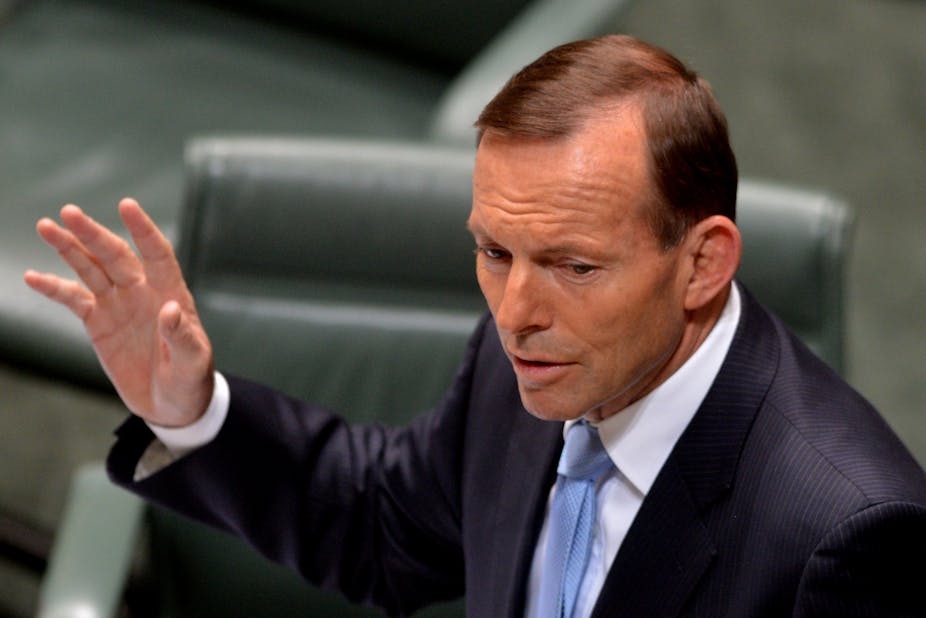It is clearer by the day that the budget reforms to higher education need work. Never mind that when in opposition, Prime Minister Tony Abbott signalled a “period of relative policy stability” for the sector, or that in the media scramble we’ve seen loose ends and mixed messages on aspects of the package.
The subsidy cuts are too harsh, and their hit-and-miss pattern is a mystery. But the package has positives. These include the maintenance of demand-driven funding for bachelor degrees and its extension to sub-bachelor programs. HELP loans, which have come to represent “Volvo safety” for financing study fairly, remain central. And even without cuts, many universities now need scope to set their own fees beyond the existing price caps.
A moral hazard cocktail
Perhaps with a view to framing it as the flip side of subsidy cuts, fee deregulation here goes further than needed. Its market design poses big new risks. But these can’t be examined without turning to economic concepts such as “moral hazard”: situations where those deciding what risks to take are not the ones who suffer if it turns out badly. (Example: Mr Selfridge advises Paris Hilton on how best to use her father’s credit card.)
The reform mix here is a moral hazard cocktail, with more than a hint of Molotov.
First, the package links uncapped prices to unlimited loans in a repayment scheme designed, a la Volvo, to give purchasers airbag protection from price impacts. Second, it does this in a sector where prestige is a proxy for quality, price will be a mark of prestige, and applicants can’t really assess what they’re buying until too late. And third, in these conditions it leaves pricing up to institutions whose DNA urges them to spend surpluses not on teaching but on research, the main source of prestige.
Prices will rise despite greater competition
If the package passes the Senate, what then? The official line, as Treasurer Joe Hockey’s budget speech put it, is that “some course fees may rise and some may fall”. Yet across the political spectrum, experts expect most fees to rise substantially.
In The Conversation, Simon Marginson put it this way:
It is widely expected that most Australian universities will raise fees to at least two to three times present levels, though there will be a bargain market among lower-status institutions and private colleges.
In the Weekend Australian, Andrew Norton said:
In the medium term … typical total course costs that are now between $18,000 and $30,000 could average between $30,000 and $60,000, depending on what and where a student studies. Cheaper and more expensive options will be available outside these ranges.
Meanwhile in an interview with the ABC’s Fran Kelly on June 1, Education Minister Christopher Pyne defended his policy:
It is a real market because there will be about 200 competitors competing with each other for students … at the end of the day, I think competition will drive prices down and students will be the winner in terms of quality and price.
Yes, price discounting will occur in the “bargain market” for, say, business courses. But not at the “high end”; and in turn, most “mid-tier” players will lift prices also. As economist Bill Massy observes of US higher education markets, there’s a “price umbrella” effect: elite universities set prices ever higher, and this allows others to lift prices beneath them, as a market signal of good quality plus fair value.
Freakonomics 101
At a recent seminar at the University of Melbourne, HECS architect Bruce Chapman explained why the economic assumptions of the reform package seem flawed. In a HELP-based university sector, he argued, open competition won’t constrain prices at elite institutions. Then (as in the UK when fee caps were lifted under similar loan scheme conditions) status rivalry and price-quality associations will lead others to mimic the leaders.

In turn, he argued, HELP debts will be much bigger; they’ll grow faster due to higher rates of compound interest; and about 40% of female graduates won’t ever repay their debts in full. As a result, the mountain of unpaid HELP debt on the government’s books will grow ever larger. In the end, Chapman predicts, HELP debts will escalate to a point where people stop trying to repay them, leaving taxpayers to carry the cost.
On Chapman’s logic, an alarmist might say, you remove a seatbelt here and a handbrake there, add time out for kids or a job market slump, and see HELP debts become the “Volvos that ate Canberra”.
In a lecture at the Mitchell Institute, Victoria University Vice-Chancellor and economist Peter Dawkins reviewed these market design problems and outlined some possible remedies:
Complete deregulation of fees and uncapping of income-contingent loans brings with it a number of risks: substantially increased debt levels on students … high levels of HECS debt on the government’s balance sheet; increased default on loans; and the significant possibility of excessively high prices. These effects could be ameliorated in three ways: a cap on the size of the loans; a cap on the fees; and/or a reduction in the Commonwealth subsidy when fees increase above certain levels.
An example might be the case for “market-capped” fees put by ANU Vice-Chancellor Ian Young: in any given course, the domestic fee plus the subsidy should be less than the fee for an international student. This would cap prices lower than the package implies, where the international fee itself is the upper limit.
What next?
Both the demand driven system review and the Commission of Audit recommended further work on fee deregulation before introducing reforms.
If the package is to pass the Senate in September, there’s time for Pyne to consult further as planned, and refine the market design. New modelling of HELP debt scenarios such as those released by Universities Australia will help this work.

